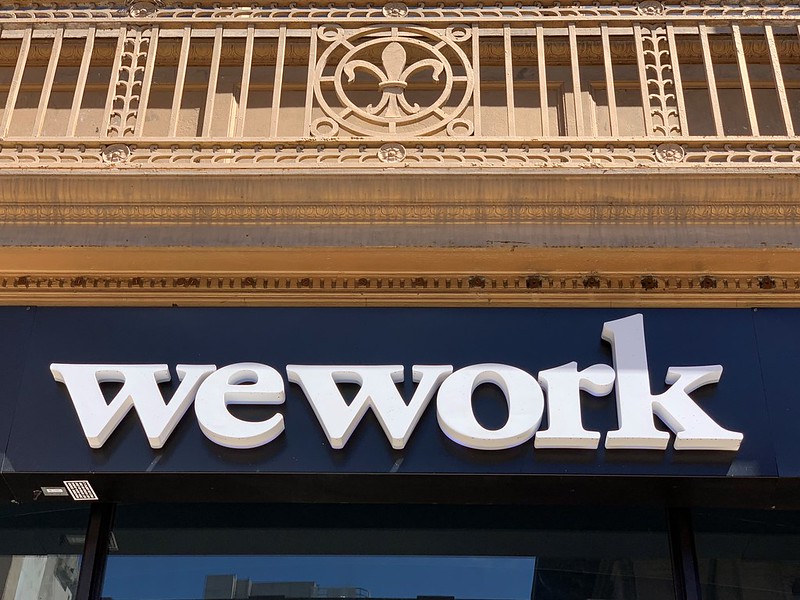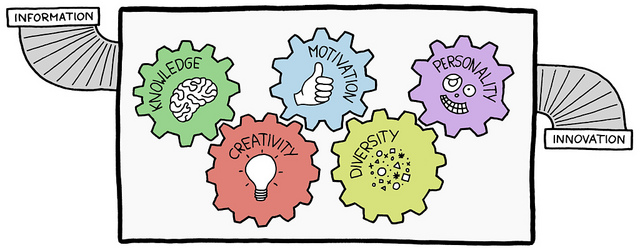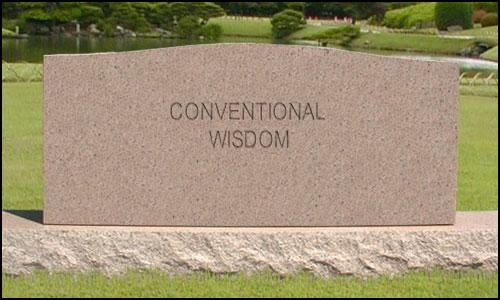|
|
|
Monday, January 6th, 2020

Poking through 14+ years of posts I find information that’s as useful now as when it was written.
Golden Oldies is a collection of the most relevant and timeless posts during that time.
First, Steve Wozniak’s comments from 2016 are even less true today than they were then. Secondly, money has become the all-consuming focus for most people regardless of profession, driven for some by necessity, but in tech more often by ego, stuff and an aspirational lifestyle. That said, startups as a source of wealth may be falling out of style, as you’ll see tomorrow.
Read other Golden Oldies here.
A Friday series exploring Startups and the people who make them go. Read all If the Shoe Fits posts here
I only partly agree with Steve Wozniak’s recent comment.
“I think the money that’s been made has attracted a different kind of people looking at technology today and saying ‘Oh my gosh, I could maybe have a startup and make a bunch of money,’” Wozniak said. “And the ones that come out of business school, money’s the priority. For the ones that come out of engineering school, being able to accomplish and design things that didn’t exist before is their priority.”
Woz gives too much credit to the engineers.
It’s not just the biz school crowd that’s focused on the bucks.
The money bug has bit a good number of techies, too.
Years ago, no matter their role, people joined startups because they craved the bleeding edge, whether software, hardware or services.
This was true of both tech and non tech. In the words of Star Treck, they wanted “to go where no man has gone before” — or at the least go there differently.
Today the journey is more about getting rich and/or making connections for the future.
For decades I’ve told clients, “The person who joins your company for money/stock/perks will leave in a heartbeat for more money/stock/perks.”
That hasn’t changed, if anything it’s just gotten more so.
Image credit: HikingArtist
Posted in Entrepreneurs, Golden Oldies, Hiring, If the Shoe Fits | No Comments »
Wednesday, October 16th, 2019

Top bosses can create/ruin more than a company’s culture, they can literally destroy the company.
How much damage can one person inflict?
Ask Adam Neumann, founder and ex-CEO of WeWork.
Just six weeks ago, the coworking giant WeWork was the US’s most valuable tech startup.
How valuable? Try $47 billion, based on it’s last funding round.
Then it tried to go public.
Almost immediately, all hell broke loose. A steady stream of rapid-fire headlines detailed Neumann’s self-dealing, mismanagement, and bizarre behavior. Within 33 days the offering was scuttled, WeWork’s valuation plummeted 70% or more, and Neumann, who believed he would become the world’s first trillionaire, was ousted as CEO. What was supposed to be Neumann’s coronation as a visionary became one of the most catastrophically bungled attempted debuts in business history.
Hard to believe, but it seems a lesson has been learned and the so-called magic of Silicon Valley is waning. Visions and charisma are no longer enough.
Investors, reporters, and analysts, chastened after seeing Theranos revealed as a massive fraud and watching Uber fail to live up to the hype, didn’t let another visionary founder pull the wool over their eyes.
Without new funding, and with the IPO shelved, WeWork could run out of money by Thanksgiving and be forced to file bankruptcy.
Founders and CEOs aren’t gods.
They are mere mortals; human beings just as capable of screwing up as anyone else.
There’s an old Italian proverb that says it all — after the game, the King and the pawn go into the same box.
Image credit: Phillip Pessar
Posted in Culture, Entrepreneurs, Ethics | No Comments »
Monday, March 26th, 2018

Poking through 11+ years of posts I find information that’s as useful now as when it was written.
Golden Oldies is a collection of the most relevant and timeless posts during that time.
People Like Me is probably one of the most important posts I ever wrote. Additionally, 12 years ago I said,
A workforce that homogenizes along any lines is a workforce that will either miss, ignore, or be unable to reach a part of their market.
And in 2007 I wrote,
Keep in mind that true diversity includes MAP and mental function, not just race and gender. I’ve known managers whose organizations were mini-UNs with equal numbers of males and females, but they might as well have been cloned from the boss, their thinking was so identical.
I call it “homogenizing,” which is the polar opposite of diversity, which includes race, gender, religion, ethnicity, and MAP. Research has proven that while diversity pays, homogenizing will kill you.
Read other Golden Oldies here.
A CEO (who wants to stay anonymous) called me today and said, “If charm causes bad hires, what causes “wrong hires?” He defined a wrong hire as one where a good person with good skills that seemed to fit the req was hired, but didn’t add the expected strength to the team. So I explained comfort zones and he said, “You should put that in the blog,” so I am.
I first wrote about comfort zones back around 1999 (Hiring in Your Comfort Zone) for msdn (Microsoft Developers Network, where I used to have a column) and the idea hasn’t changed a lot.
Our comfort zone is where we all prefer to do things. People want to spend their time with people like themselves. This isn’t about simple labels, such as race, religion or gender, which are more society’s labels. Our own subjective labels have more to do with schools (Harvard, Stanford, Wharton, etc.), specific professions (not fields), and especially companies (think McKinsey). It’s how we choose a way to connect, because, true or not, MIT grads believe they have more in common with MIT alums than with Cal or Columbia. Doctors hang out with doctors, usually those with the same, or similar, specialty or employer, but rarely with nurses or radiology techs. We like enough knowledge commonality so we don’t feel ignorant, but can still learn. It all boils down to, “people like me (PLM).”
And that maybe fine in our personal life—but not so fine in our professional life, especially not for managers responsible for hiring. The broader the PLM definition the longer it takes to become noticeable, but it’s there if you look for it.
I’ve known the following (often more than one who fits the profile):
- Director of system development who came from a software background, hired hardware engineers with extremely strong software experience, although it wasn’t needed.
- VP of marketing with a Harvard MBA whose team were all “Ivy.”
Think of the articles you are constantly seeing of new CEOs who hire the majority or their team from their previous employer with the express purpose of getting the same mindset. Bob Nardelli, the new CEO of Home Depot is a great example of PLM hiring. And sometimes it works, at least for awhile.
But the long-term cost to companies can be high.
- When the choice is between the best applicant and PLM, PLM usually wins out, slowly lowering the quality of talent.
- PLM homogenizes the staff, reducing diversity of both thinking and thought (methodology and result) and it’s that diversity that supplies strength and creativity.
- PLM can wreak havoc on retention efforts and drive out legacy knowledge.
- PLM hiring can involve just one part of a company or create a ripple effect, e.g. slow product development, which delays delivery, crimping sales and keeping the company from achieving its revenue goals.
Yes, all of this and much more are a product of a PLM mindset.
Image credit: Jurgen Appelo
Posted in Culture, Golden Oldies, Innovation | No Comments »
Wednesday, January 24th, 2018

AKA, commentary on the current world.
The more I see of the world, the more am I dissatisfied with it; and every day confirms my belief of the inconsistency of all human characters, and of the little dependence that can be placed on the appearance of merit or sense.
Source: Pride and Prejudice by Jane Austen
A tyrant must put on the appearance of uncommon devotion to religion. Subjects are less apprehensive of illegal treatment from a ruler whom they consider god-fearing and pious. On the other hand, they do less easily move against him, believing that he has the gods on his side.
Source: Aristotle
As democracy is perfected, the office of the President represents, more and more closely, the inner soul of the people. On some great and glorious day the plain folks of the land will reach their heart’s desire at last, and the White House will be adorned by a downright moron.
Source: H. L. Mencken
It’s the exact same story of too many people with too much money. That breeds arrogance, bad behavior, and jealousy, and society just loves to take it down.
Source: anonymous investor (the Other Tech Bubble, Wired 12/16/17)
Image credit: Omar Bariffi
Posted in Personal Growth | No Comments »
Friday, July 28th, 2017
A Friday series exploring Startups and the people who make them go. Read all If the Shoe Fits posts here.
 You could be a You could be a
- charismatic, visionary leader;
- talented manager;
- brilliant developer;
- fine storyteller; and
- able to raise multiple, large investment rounds.
You could still fail.
Why?
For the same reason nearly half of startups fail.
42% of startups fail because of no market need according to CB Insights.
Peter Drucker says it best.
 Image credit: HikingArtist Image credit: HikingArtist
Posted in If the Shoe Fits, Innovation | No Comments »
Tuesday, May 9th, 2017

Many of the actions of people such as Travis Kalanick, Donald Trump, Parker Conrad, etc., are deplored, yet they seem to have no effect on people’s opinions.
They go their merry way while thousands of far superior leaders are ignored.
When the subject does come up the usual response involves the infamous “yes, but…”
Why is that?
I finally found an answer that makes sense from Margarita Mayo, a Professor of Leadership and Organizational Behavior at IE Business School in Madrid.
Mayo terms the first type of leader ‘humble’ and the second ‘charismatic’.
Humble leaders improve the performance of a company in the long run because they create more collaborative environments. They have a balanced view of themselves – both their virtues and shortcomings – and a strong appreciation of others’ strengths and contributions, while being open to new ideas and feedback. (…)
[Charismatic leaders], despite their grandiose view of themselves, low empathy, dominant orientation toward others, and strong sense of entitlement, their charisma proves irresistible. Followers of superheroes are enthralled by their showmanship: through their sheer magnetism, narcissistic leaders transform their environments into a competitive game in which their followers also become more self-centered, giving rise to organizational narcissism, as one study shows.
Mayo’s research and the other’s she cites (with links) provide proof of the value produced by the humble leader vs. their charismatic counterpart.
However, I think there is another problem happening in the background that is word-related.
Ask most people if they want to be remembered as ‘humble’ or ‘charismatic’ and most will choose charismatic.
Warren Buffet aside, ‘humble’ is more often associated with dorky, weak, shy, and unassuming.
Not adjectives most people would choose to describe themselves.
Thanks to Wally Bock for leading me to this article.
Image credit: Edvin J.
Posted in Ducks In A Row, Leadership, Personal Growth | No Comments »
Wednesday, September 2nd, 2015

I often say that I’m successful now because I’ve made every mistake in the book. The key is I’ve learned from those mistakes and it’s rare — if ever — that I make the same one twice. –Robert Herjavec
Herjavec wrote a good post on hiring that covers many bases, but ignores two critically important factors.
- The most common reason for a bad hire is charm and the best way to guard against it is preparation.
- The most common interviewing error to avoid can be summed up this way: don’t lead the candidate and don’t follow where the candidate leads.
In fact, if you do nothing other than what is described in 1 and 2 your hires will improve significantly.
Flickr image credit: qthomasbower
Posted in Hiring | No Comments »
Saturday, August 25th, 2012
 Today we look at what’s going on in and around your head. Today we look at what’s going on in and around your head.
According to current research, being an overconfident, rude jerk is a great way to get ahead and have people look up to you. (In reality this only applies to men.)
In other words, overconfident people are perceived as having more social status, and social status is golden. (…) …research suggests that we also see rudeness as a sign of power.
Offended? Good. Because before you decide that jerkism is your best path to success see why it doesn’t really work most of the time
For all their charisma, bravery and bravado, jerks don’t do as well as you might think.
Jerkism covers a multitude of sins including positive thinking (free registration required), especially when it holds 110% sway over the minds of leaders.
But several recent studies have critiqued the positive thinking movement, highlighting the negative personal and organizational effects (…) In short, Prozac leaders can wind up believing their own narrative that everything is going well.
People spend large amounts of time these days trying to assimilate all the available information applicable to their job, project, etc, because it will improve their results. But maybe that’s not such a good thing; instead consider the idea of two lists.
It’s hard to do because maybe, just maybe, that next piece of information will be the key to our success. But our success actually hinges on the opposite: on our willingness to risk missing some information. Because trying to focus on it all is a risk in itself. We’ll exhaust ourselves. We’ll get confused, nervous, and irritable.
What will your life be like as you age in an era of DIY toughness? If you are lucky, EngAGE, a program that enhances life for the 99% will become a model.
“We see people without money, who had very hard lives, who are not aware of their own potential,” said Maureen Kellen-Taylor, the chief operating officer of EngAGE, a program in the Los Angeles area that provides arts and other classes for some 5,000 people — the vast majority of them low-income — living in senior apartment communities.
Flickr image credit: pedroelcarvalho
Posted in Expand Your Mind | No Comments »
Thursday, March 29th, 2012
I ended Tuesday’s post about micro cultures by saying, “That’s why cultural fit or, at the very least, cultural synergy, is the most important trait to look for when hiring at every level.”
The result was several phone calls and a few emails asking for specifics. I’ve offered specifics multiple times over the years, so just click the links for the answers.
But when all is said and done, the hardest part of good hiring is walking away from candidates with the right skills and the wrong attitude.

SUBMIT YOUR STORY
Be the Thursday feature – Entrepreneurs: [your company name]
Share the story of your startup in 300 words or less.
Send it in an email along with your contact information.
I’ll be in touch.
Questions? Email or call me at 360.335.8054 Pacific Time.
Flickr image credit: Ashish
Posted in Entrepreneurs, Hiring, Retention | No Comments »
Thursday, October 21st, 2010
 True leadership often defies conventional wisdom about what works and what doesn’t in order to succeed. True leadership often defies conventional wisdom about what works and what doesn’t in order to succeed.
Conventional wisdom says that a high school with 4100 students and 300 teachers is doomed to fail, which it did until a giant dose of in-house of initiative and tenacity turned it around.
In 2000 only a quarter of Brockton students passed statewide exams and a third dropped out; compare that to now.
This year and last, Brockton outperformed 90 percent of Massachusetts high schools.
This wasn’t accomplished by a charismatic, visionary leader who came from outside, firing up the troops and getting rid of dead wood.
It came from a group of teachers working under a principal who did nothing.
That team of leaders took the initiative, meeting on their own time to craft an approach that would work.
Then Susan Szachowicz and a handful of fellow teachers decided to take action. They persuaded administrators to let them organize a school wide campaign that involved reading and writing lessons into every class in all subjects, including gym.
An approach that didn’t cost more money, but one that fundamentally changed Brockton’s culture.
Moreover, they had the tenacity to keep selling the concepts to their peers in the face of doubt and resistance. Not just with words, but with support and training.
In just one year test scores rose dramatically.
Overnight, the restructuring committee gained enormous credibility, and scores of once-reluctant teachers wanted to start attending its Saturday meetings, which continue today.
Szachowicz became principal in 2004, replacing the positional leader who did nothing.
Read the article (it includes a link to the Harvard study) and remember it the next time conventional wisdom tries to dictate to you what can and can’t be done.
Image credit: Tombstone image generator
Posted in Leadership's Future | No Comments »
|
 Subscribe to
Subscribe to
MAPping Company Success
About Miki 
Clarify your exec summary, website, etc.
Have a quick question or just want to chat? Feel free to write or call me at 360.335.8054
The 12 Ingredients of a Fillable Req
CheatSheet for InterviewERS
CheatSheet for InterviewEEs™
Give your mind a rest. Here are 4 quick ways to get rid of kinks, break a logjam or juice your creativity!
Creative mousing
Bubblewrap!
Animal innovation
Brain teaser
The latest disaster is here at home; donate to the East Coast recovery efforts now!
Text REDCROSS to 90999 to make a $10 donation or call 00.733.2767. $10 really really does make a difference and you'll never miss it.
And always donate what you can whenever you can
The following accept cash and in-kind donations: Doctors Without Borders, UNICEF, Red Cross, World Food Program, Save the Children
*/
?>About Miki
About KG
Clarify your exec summary, website, marketing collateral, etc.
Have a question or just want to chat @ no cost? Feel free to write
Download useful assistance now.
Entrepreneurs face difficulties that are hard for most people to imagine, let alone understand. You can find anonymous help and connections that do understand at 7 cups of tea.
Crises never end.
$10 really does make a difference and you’ll never miss it,
while $10 a month has exponential power.
Always donate what you can whenever you can.
The following accept cash and in-kind donations:
|








 You could be a
You could be a Image credit:
Image credit: 

 Today we look at what’s going on in and around your head.
Today we look at what’s going on in and around your head.
 True leadership often
True leadership often 
